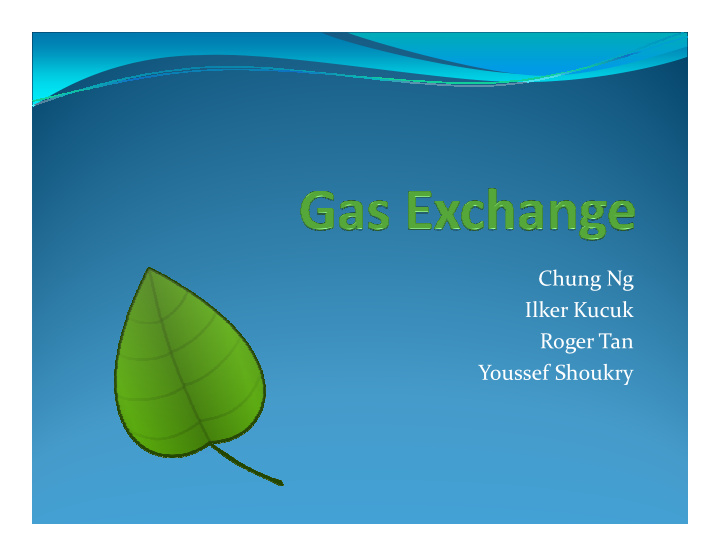



Chung Ng Chung Ng Ilker Kucuk Roger Tan Youssef Shoukry
Problem & Solution � Gas is getting more and more expensive, but cars aren’t keeping up � Drivers are unaware of one key factor in improving gas mileage—themselves! mileage—themselves! � Seek to improve efficiencies in driving, car, and routing through an incentive-based system � Gas Exchange: � Plans efficient trips � Gives feedback on driving � Provides incentives to encourage efficient driving
Overview � Jean-Luc needs to get from Redmond to Seattle during rush hour. � 520 bridge is dynamically tolled. � 520 bridge is dynamically tolled. What is the best route and time? � Gianluca is a new driver and needs coaching on efficient driving because his Ferrari is a gas hog
Overview (cont.) � John Luke’s car is always having issues and he’d like advance warnings before the thing dies on the road on the road � Juan Lucas is very eco-conscious and wants to minimize his driving footprint
Tasks � 1. Planning an efficient route A twist on an everyday task, which has room for improvement improvement � 2. Receiving feedback on driving Nobody here is a perfect driver, some more so than others
Tasks (cont.) � 3. Viewing car status • Finding out what’s wrong with your car can be tedious. • • This would illustrate how Gas Exchange makes it brain dead to act on issues. � 4. Redeeming points for rewards • Everybody likes to save money. • Illustrates the immediate benefit to the driver.
Design - Initial � Initially just in-car systems � Broadened scope to include phone and gas kiosks for a better end-to-end story � Contextual Inquiry: � People wanted to save on gas & money, but didn’t have an easy, ubiquitous way to do so � Ignore car status until something bad happens � No idea about driving efficiency
Design Evolution - Testing � 3 participants: � #1: Male, 30s, hospital administrator � #2: Female, 20s, scientist � #3: Female, 20s, marketing � Tasks: � Mobile phone � Plan trip � In-car � Get driving feedback � Checking car status � Gas station kiosk � Redeeming points for a discount
Design Evolution - Changes Nav Triangle Driver Rating EcoPoints on HUD
Prototypes � Video: (link) � Interactive: (link)
Design Notes � Assumptions � Systems are connected all the time � Gas Exchange is adopted by car makers, gas stations, phone platforms, insurance companies… � Open Issues � Who funds it? � Government, insurance companies, car makers, gas companies, etc. � Other incentives? � Cheaper insurance, car discounts, social networking “achievements”
Design Notes (cont.) � Value Sensitive Design � Many stakeholders (direct and indirect) � Direct: users � Indirect: other drivers, mechanics, car companies Indirect: other drivers, mechanics, car companies � Value tensions � Safety vs. fuel efficiency � Time vs. money savings
Lessons Learned � Get a variety of testers and feedback � Can’t assume your design will always work! � Paper prototypes may not always be readily intuitive � Our triangle control � Brainstorming and collective design is really effective � So are multiple iterative design sessions � Lot of work, but lots of fun!
Recommend
More recommend